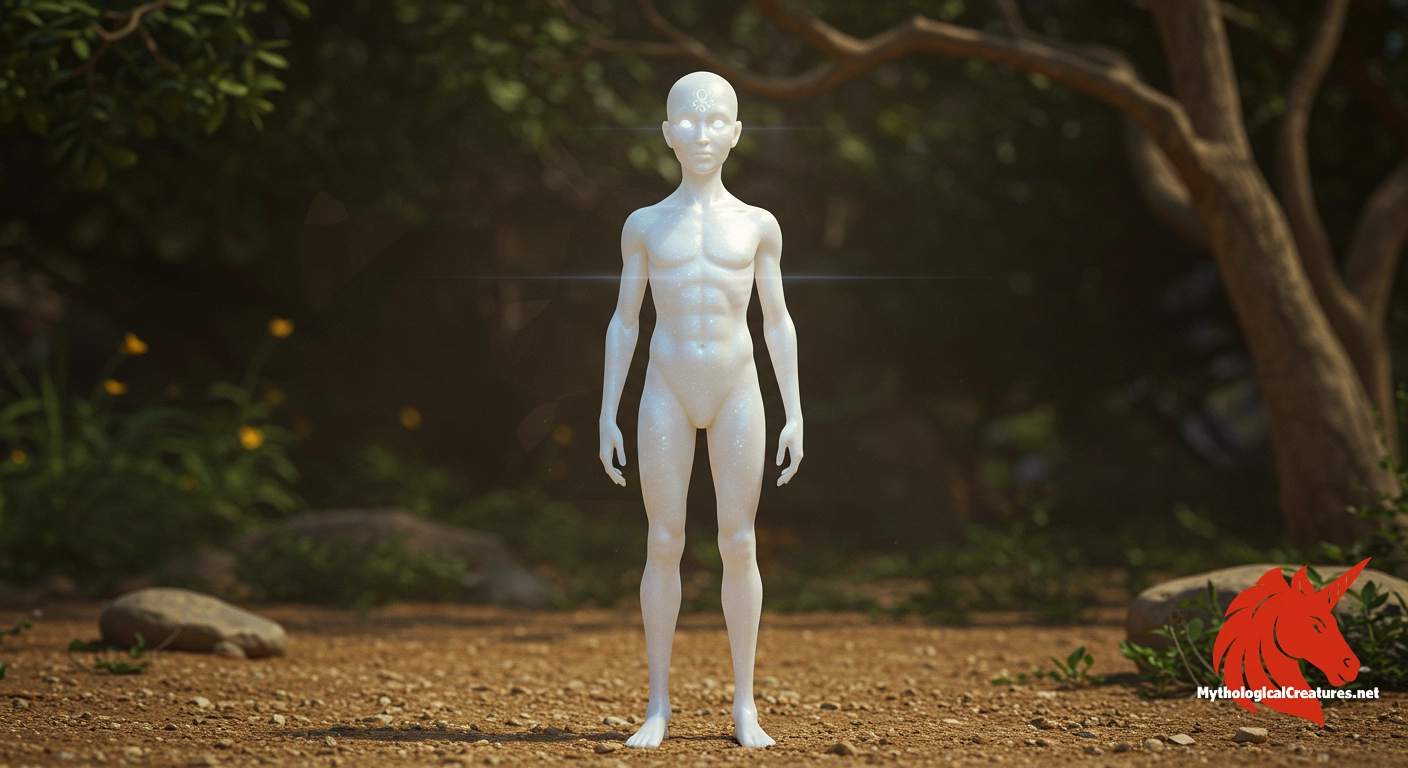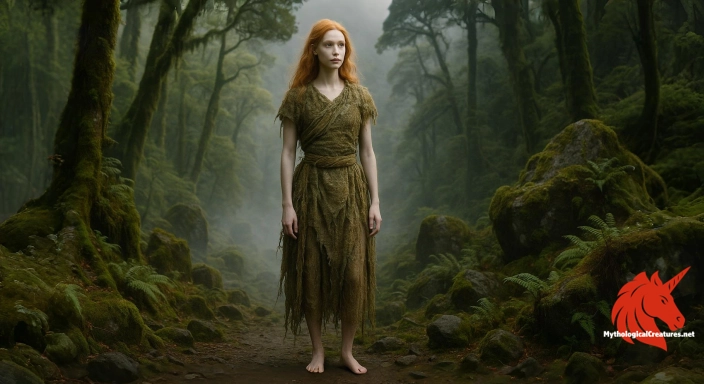Bihram: Bihram, also known as Bihram Rabba, is an uthra in Mandaeism who presides over the masbuta (baptism) ritual.

Bihram
Bihram - Bihram is a key divine figure whose presence sanctifies the baptism ritual and reinforces the themes of purification and renewal in Mandaeism.
Origins & First Encounters
Bihram stands as a luminous figure within the intricate cosmology of Mandaeism, revered as an uthra and divine guardian. He is also honoured with the title Bihram Rabba, emphasising his paramount status among celestial entities. His chief function is to preside over the masbuta, the baptismal ritual that symbolises spiritual rebirth and purity. Originating from traditions that interweave Gnostic and ancient Mesopotamian beliefs, his presence underscores a connection between the earthly realm and the divine. Early attestations of Bihram appear in ritual texts that highlight his role in maintaining cosmic balance and order. His invocation during baptisms signifies a deep commitment to spiritual cleansing and renewal. Bihram’s character underlines the importance of transformation through divine mediation, offering a bridge between the human and the transcendent. Over time, his enduring image has become integral to the liturgical practices of the Mandaean community, reinforcing themes of purity, hope, and rejuvenation.
Source Texts & Tale Variants
The primary texts of Mandaeism offer the principal insights into Bihram’s divine role, with the Qulasta serving as a central source of liturgical references. These texts detail the invocations and ritual prayers where his name is pronounced, underscoring his importance in the masbuta ceremony. Although the available sources contain only succinct mentions, they reveal a consistent theme of protection and guidance during religious rituals. The terse narrative found within these liturgical compositions has given rise to a variety of interpretative traditions among practitioners. Oral traditions and ritual recitations further enrich these textual accounts, providing additional layers of devotional nuance. Different manuscript traditions offer subtle variations, hinting at an evolving understanding of his attributes over generations. Such multiplicity in the sources illustrates the vibrant and adaptive nature of Mandaean ritual practice. The interplay between written texts and oral transmissions ensures that Bihram’s legacy continues to be both mystically revered and dynamically reinterpreted.
Form & Powers
Imagined as an ethereal being, Bihram is often depicted with a resplendent and luminous form that radiates celestial light. His attire is envisaged as flowing garments of shimmering brilliance, symbolising the purity inherent in the ritual of rebirth. Artistic renditions tend to portray him with a calm and wise countenance, where serene eyes reflect both benevolence and ancient knowledge. Some depictions suggest the presence of multiple wings, each imbued with symbolic meaning and representing divine grace. Intricate patterns and sacred geometric motifs embellish his form, linking him visually to the mystical architecture of sacred spaces. The use of vibrant, otherworldly colours in these depictions adds an element of transcendence to his appearance. While the focus is more on his symbolic radiance than on literal physical attributes, each aspect of his portrayal serves to highlight his role as a mediator between worlds. This blend of artistic imagination and ritual symbolism creates an image of Bihram that is at once awe-inspiring and deeply meaningful.
Regional Faces
The portrayal of Bihram exhibits notable regional variations that reflect the diversity within the Mandaean tradition. In areas of southern Iraq and southwestern Iran, his representation remains closely tied to the fundamental rituals described in ancient texts, preserving his traditional iconography. In contrast, communities in the diaspora have adopted a more expansive interpretation, viewing him as a universal emblem of spiritual purification. Regional artistic expressions often introduce additional embellishments, merging traditional attributes with local symbolic motifs. Such adaptations reveal how the enduring figure of Bihram is molded by local cultural contexts and devotional needs. Variations in liturgical recitations also indicate a flexible approach to his attributes, allowing for a dynamic integration of historical tradition and contemporary spirituality. While the core aspects of his character remain intact, these regional differences highlight the adaptive nature of myth across communities. This interplay of local tradition and canonical texts has ensured that Bihram’s significance continues to evolve in response to changing cultural landscapes.
Cultural Parallels
Bihram’s role invites comparison with a number of guardian and intermediary figures found in other mythological traditions. His function as a celestial protector resonates with the depictions of prominent archangels in Abrahamic faiths, who similarly oversee rites of passage and divine intervention. In the realm of Gnostic belief systems, figures akin to Bihram are charged with guiding souls toward enlightenment and spiritual renewal. This parallel is further highlighted by the presence of protective deities in Zoroastrianism, where Amesha Spentas also mediate between the human and the divine. The recurring motif of a divine custodian of spiritual rites suggests a universal quest for cleansing and transformation across cultures. Comparative analysis reveals that while the rituals and iconography may differ, the underlying principle of sacred administration recurs in various religious narratives. Bihram’s attributes, when viewed alongside those of other mythic guardians, underscore a shared human endeavour to connect with the transcendent. This broad comparative framework thus enriches the understanding of his symbolic presence as both uniquely Mandaean and part of a larger tapestry of angelic lore.
Legacy & Modern Evolution
The evolution of Bihram’s image over time reflects a dynamic dialogue between enduring tradition and modern reinterpretation. Historically, his identity as the overseer of the masbuta ritual cemented his place as a cornerstone of spiritual guidance within the Mandaean community. Over centuries, traditional depictions have maintained the core attributes of his luminance and protective power, even as subtle refinements have been introduced through artistic and liturgical innovation. In the modern era, as the Mandaean community experiences both geographical dispersal and cultural exchange, Bihram has come to symbolise not only ritual purity but also the adaptive resilience of ancient spiritual traditions. Contemporary artists and scholars have reimagined his iconography, incorporating modern aesthetic sensibilities while remaining rooted in ancient symbolism. Debates in modern religious circles also explore his relevance as a universal symbol of renewal in a rapidly changing world. This renewed attention has spurred a revival of interest in Mandaean rituals, with Bihram continuing to feature prominently in both academic inquiries and community practices. His legacy today is a blend of time-honoured ritual function and modern creative reinterpretation, attesting to the lasting power of myth in addressing the timeless human aspiration for transcendence.
Interesting Fact
Bihram is uniquely revered for embodying the divine balance between protection and renewal, making him a central figure in the spiritual practice of Mandaeism.
Quick Creature Info
Origin:
Features:
Associations:
Our Mythic Legendary Rating:

Also Sometimes Known As:
Habitat:
Supernatural Powers:
Physical Attributes:
Abilities:
Behavior:
Lore:
Related Creatures, Tales or Lore
- AAbatur
- HHibil Ziwa
- PPtahil
References
Discover Another Mythical Legend You May Not Have Heard Of?
Uncover the mysteries of ancient folklore and expand your knowledge of legendary beings from cultures around the world.
Dare to Meet the Patupaiarehe....
Mythical Disclaimer: The images and data on this site are derived from various historical and literary sources, but we have found that many myths often have multiple versions and interpretations across references, sometimes contradictory. As a result, these creature depictions are artistic interpretations—imaginative blends of folklore, legend, and a dash of AI guesswork. Because creature descriptions vary widely, our illustrations and accompanying information represent our best effort to honor mythology while bridging creative gaps. Enjoy these interpretations—just remember, we've done our best to respect the stories and validate available data, but in the realm of mythology, details often shift, imagination leads the way, and nothing is ever set in stone!
Curated by the Mythological Creatures Team (rev. May 2025)
